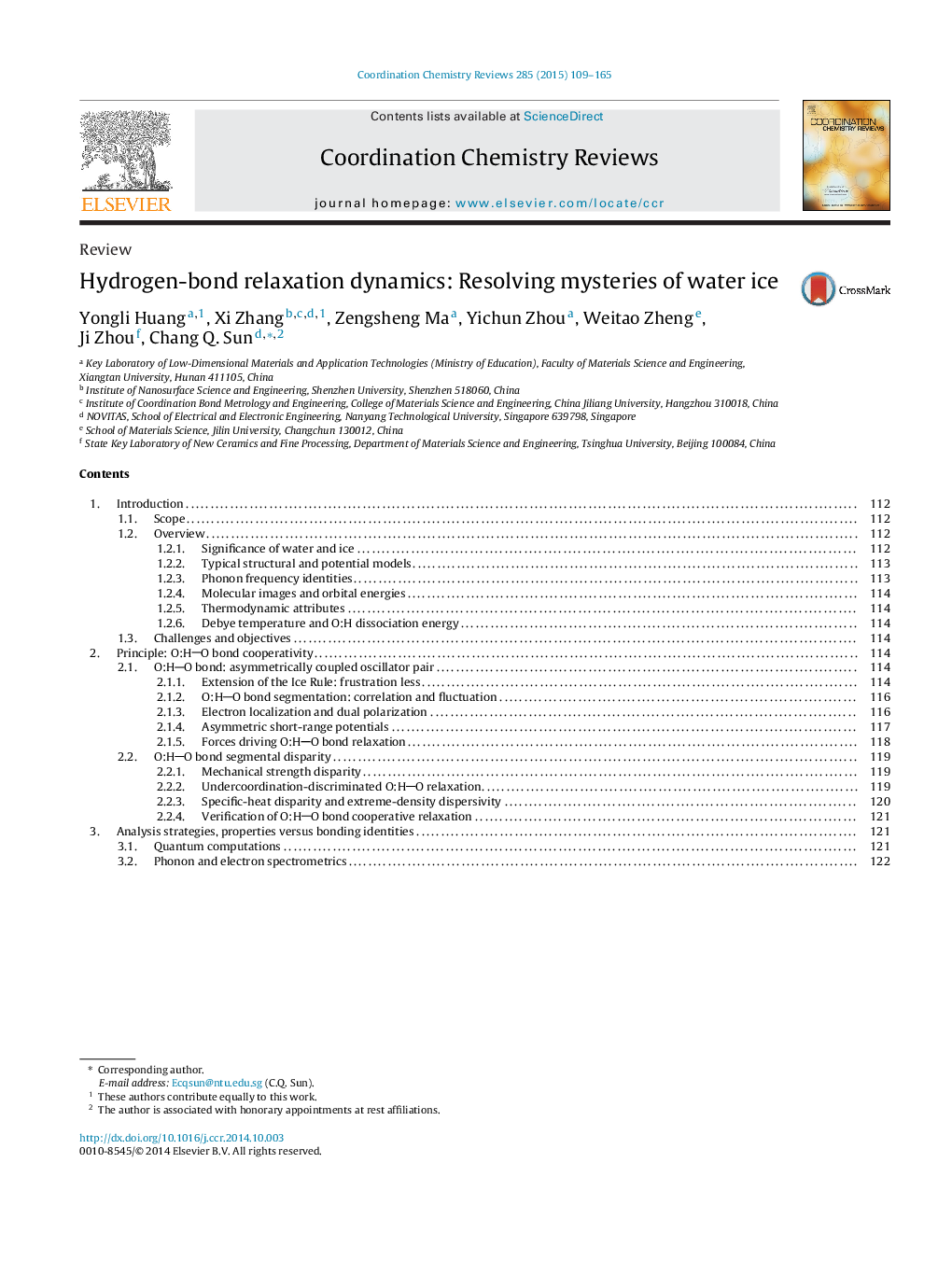| Article ID | Journal | Published Year | Pages | File Type |
|---|---|---|---|---|
| 1299863 | Coordination Chemistry Reviews | 2015 | 57 Pages |
•An extended tetrahedron unifies the length scale, geometry, and density of water ice.•O:HO bond cooperative relaxation stems anomalies of water and ice.•Water prefers 4-coordinated mono-phase with a supersolid skin unless at nanoscale.•An elastic, hydrophobic and less dense skin slipperizes ice and toughens water skin.•H-bond memory and skin supersolidity resolve Mpemba effect — hot water freezes faster.
We present recent progress in understanding the anomalous behavior of water ice under mechanical compression, thermal excitation, and molecular undercoordination (with fewer than four nearest neighbors in the bulk) from the perspective of hydrogen (O:HO) bond cooperative relaxation. We modestly claim the resolution of upwards of ten best known puzzles. Extending the Ice Rule suggests a tetrahedral block that contains two H2O molecules and four O:HO bonds. This block unifies the density-geometry-size-separation of molecules packing in water ice. This extension also clarifies the flexible and polarizable O:HO bond that performs like a pair of asymmetric, coupled, H-bridged oscillators with short-range interactions and memory as well as extreme recoverability. Coulomb repulsion between electron pairs on adjacent oxygen atoms and the disparity between the O:H and the HO segmental interactions relax the O:HO bond length and energy cooperatively under stimulation. A Lagrangian solution has enabled mapping of the potential paths for the O:HO bond at relaxation. The HO bond relaxation shifts the melting point, O 1s binding energy, and high-frequency phonon frequency whereas the O:H relaxation dominates polarization, viscoelasticity, and the O:H dissociation energy. The developed strategies have enabled clarification of origins of the following observations: (i) pressure-induced proton centralization, phase transition-temperature depression and ice regelation; (ii) thermally induced four-region oscillation of the mass density and the phonon frequency over the full temperature range; and (iii) molecular-undercoordination-induced supersolidity that is elastic, hydrophobic, thermally stable, with ultra-low density. The supersolid skin is responsible for the slipperiness of ice, the hydrophobicity and toughness of water skin, and the bi-phase structure of nanodroplets and nanobubbles. Molecular undercoordination mediates the O:H and HO bond Debye temperatures and disperses the quasi-solid phase boundary, resulting in freezing point depression and melting point elevation. O:HO bond memory and water-skin supersolidity ensures a solution to the Mpemba paradox — hot water freezes faster than its cold. These understandings will pave the way toward unveiling anomalous behavior of H2O interacting with other species such as salts, acids and proteins, and excitation of H2O by other stimuli such as electrical and magnetic fields.
Graphical abstractFigure optionsDownload full-size imageDownload high-quality image (155 K)Download as PowerPoint slide
